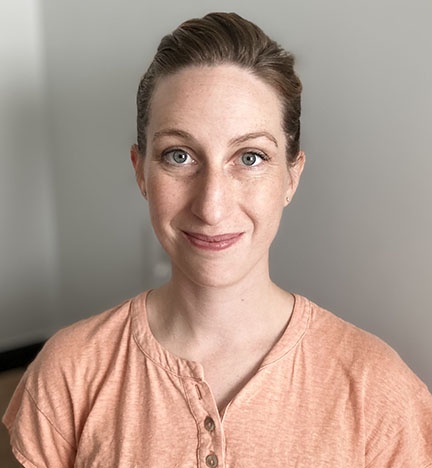No doubt it is inconvenient for the writer, but one of the best things that can happen for readers is when a great writer—a truly great writer—is required by circumstances to work in popular genres. These “marketable” books or stories, composed to put food on the table for a genius, often become little doorways for vast numbers of readers into a great mind’s private world, one they otherwise would not have entered. Think of Chesterton’s “Father Brown” series: compelled to write these stories or risk starvation, Chesterton imbued these widely read tales with his own grand ideas about the nature and existence of God, the reality of sin, and the romance of salvation. From here it is a natural next step for a reader to pick up Orthodoxy or The Everlasting Man and embark on a fantastic theological journey that will last a lifetime.
Is there a discernible unity in the life and work of a writer and thinker as complicated as Dorothy Sayers? Let’s just say, to find it requires some detective work.
This is certainly the case with the British Anglican Dorothy Sayers. I began by reading her murder mysteries, of which there are far too few, starring the inimitable Lord Peter Wimsey. After reading and rereading all the Wimsey novels I could find, I wanted to read more of her work. I was drawn to her, to the person of Sayers dodging and darting behind the words. I wanted to know more about Dorothy Sayers, and the best way to do that, obviously, is through her other writing.
All good writers are “present” in their work—that is what it means for a writer to have a “voice”—but not all writers are as psychologically whole as Sayers. She is fully present behind the romance between Peter Wimsey and Harriet Vane, the detective storywriter who captures his heart, but also behind the brutal King Herod of The Man Born to Be King and the wry title of her essay collection Are Women Human? She’s there peering out between the lines of her lovely and readable translation of Dante’s Inferno and Purgatorio; she died mid-translation of the Paradiso, but doubtless in the heavenly lines she did not finish, she is there, drawing step by step nearer the heart of the God she loved.
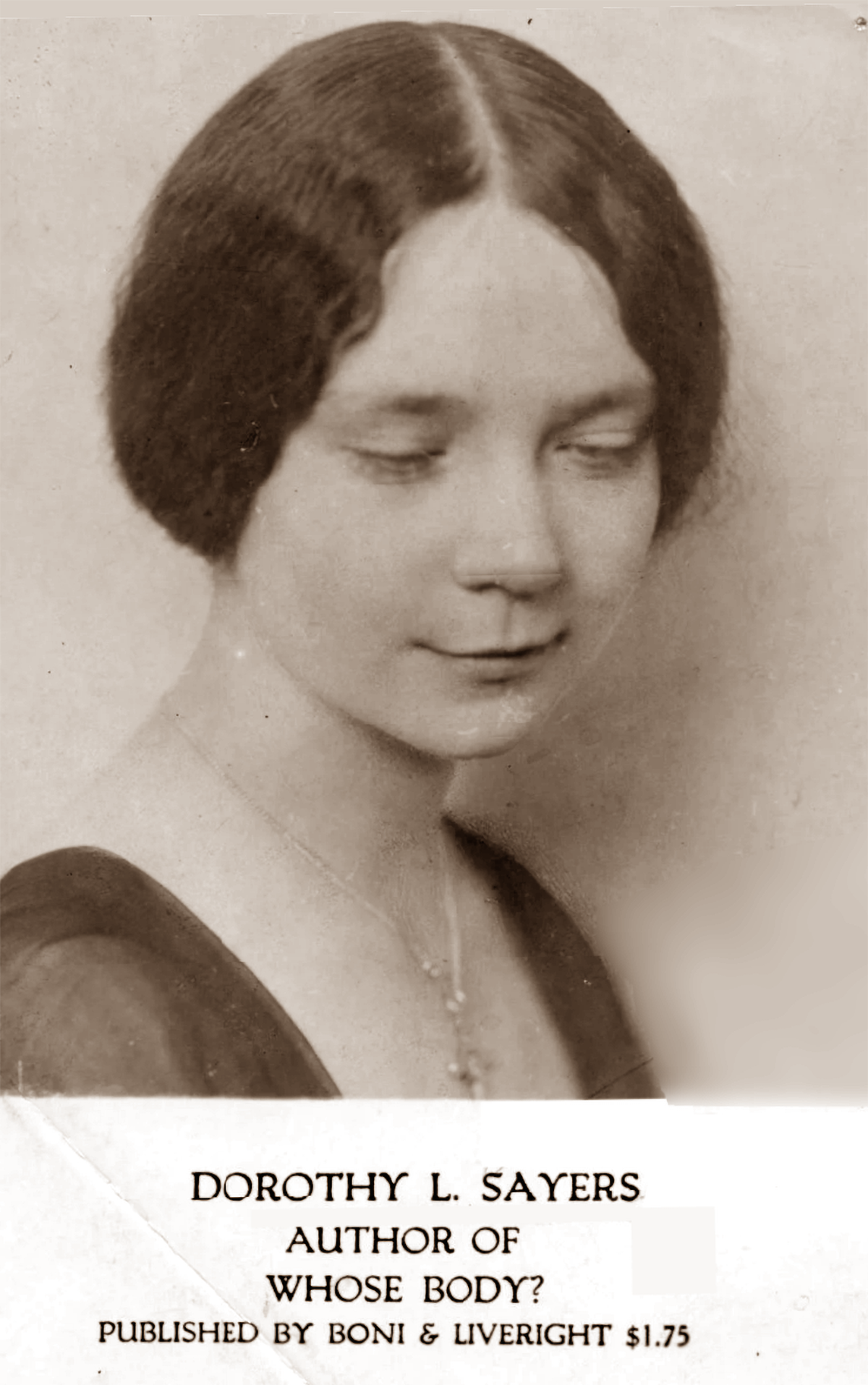
I am not an instinctive reader of nonfiction; in fact, I will generally only read nonfiction that I discover through fiction or poetry. I read Chesterton’s writings on economics only after I’d fallen in love with Innocent Smith; I picked up Gene Wolfe’s The Castle of the Otter, chockful of staggering theological insights, only after journeying through time and space (and back again) with his sci-fi hero Severian in The Book of the New Sun. George MacDonald’s fairy tales led me to his sermons and religious poetry. I’m currently reading Lucien Febvre’s daunting The Problem of Belief in the Sixteenth Century in an effort to understand whether Rabelais’ giants are orthodox Christians or a cunning atheist psy-op. Fiction, for me and for many other readers, is a hook that snatches us up into the wider world of a writer’s vision.
With Sayers, that world is one of myriad wonders. She was one of the first female graduates from Oxford University; her erudition marked her out as a leading thinker in England in the mid-20th century. But behind her accomplished literary work and her bold personality, Sayers concealed a fraught personal life in which she wrestled with theological and philosophical questions with individual urgency. From this crucible, Sayers draws her delightful fiction, her imaginative theological dramas, her thought-provoking essays, and her luminous translations. Her various writings reveal a soul working away at very hard questions through many outlets at once, with a goal of nothing less than knowledge of God.
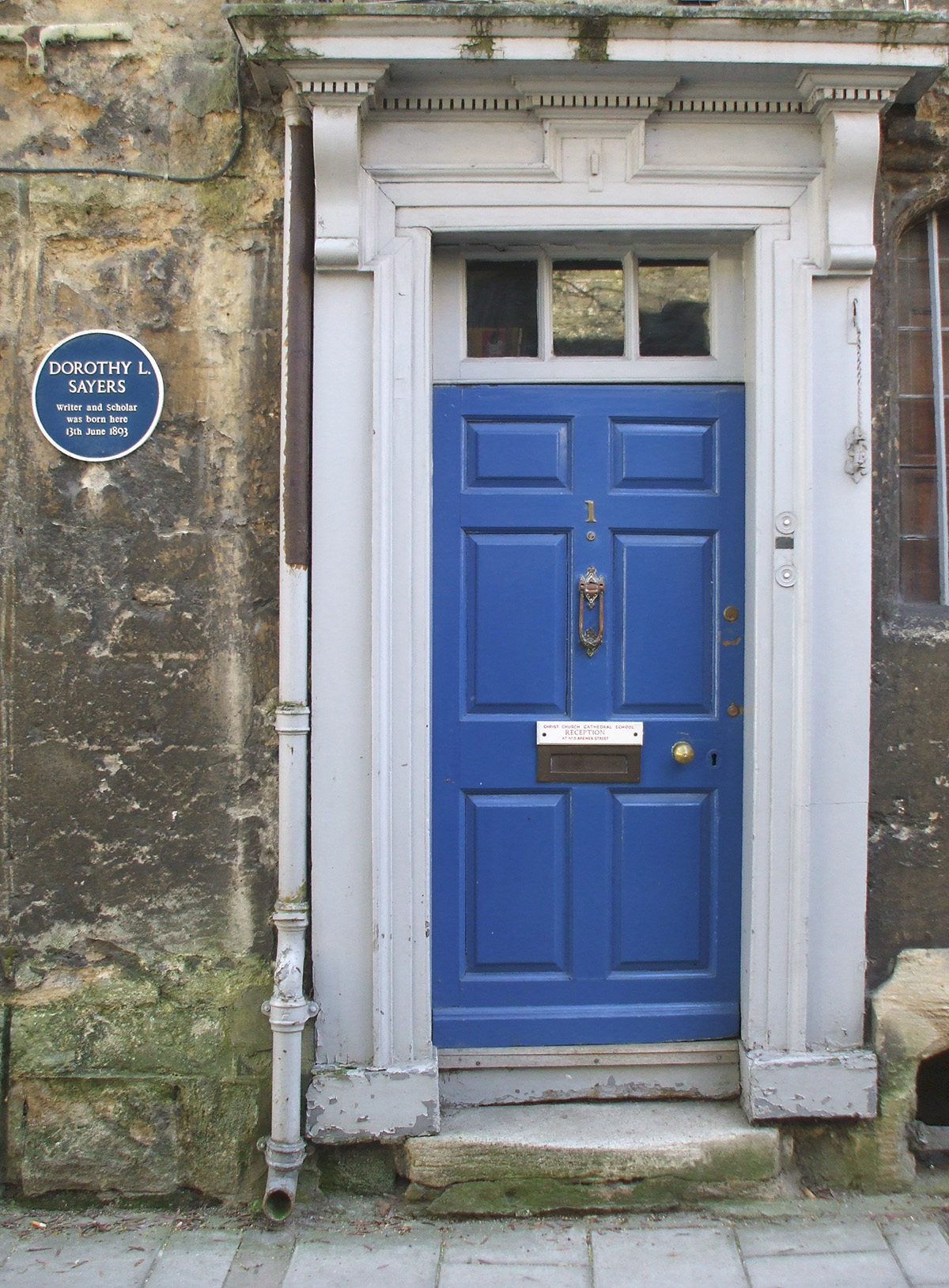
The danger, of course, for a writer who must work in popular genres to survive is that her other work, her more important work, will go unread. For many readers, surely, Dorothy Sayers exists only as a star among the constellation of Golden Age mystery writers, her Wimsey the pinnacle of her accomplishments. But for readers willing to delve beyond the detective novels into the deeper mystery of Sayers’ mind and soul, there are abundant treasures waiting.
Secrets of the Queen of Mystery
Sayers’ biography is a mystery worthy of a sleuth as perceptive as her own Peter Wimsey, with some of the most revealing episodes coming to light only after her death. She was born in Oxford in 1893, with her father serving as chaplain of Christ Church and headmaster of Christ Church Cathedral School. The family moved soon after, and Sayers spent her childhood reading books in the isolation of her father’s country parish, forming only one significant childhood friendship: her cousin, Ivy Shrimpton, who would play a vital role in Sayers’ life in years to come. Despite the quietness of her upbringing, Sayers was exposed to a vast world beyond her little parish; her father began teaching her Latin when she was seven, and her aptitude for intellectual pursuits quickly made it clear that a retired country life was not her destiny.
Sayers recognized that her developing literary voice needed a deeply intimate Other.
Sayers attended Somerville College at Oxford and in 1915 earned the equivalent of a First in her course in Modern French (which, in the parlance of the university, means Medieval French). At the time, however, the university did not award degrees to women. When Oxford changed its rules five years later, Sayers became one of the first women in the university’s thousand-year existence to receive a degree.
Upon graduation, Sayers tried her hand at several careers, from editing to advertising. While she had flashes of brilliance in each (she famously developed the Guinness Toucan, who continues to grace Guinness beer advertisements to this day), S.H. Benson, the head of his eponymous ad agency, said it would hardly be fair for her to continue in marketing. “It would be like harnessing a racehorse to a plough,” he said, indicating that Sayers’ dazzling intellect was evident even after she left Oxford.

In her years at Oxford and just out of school, Sayers began wrestling with the questions that would define her work for the rest of her long career: questions of the relation between men and women, how we can perceive God in modern society, and how art—and the process of making art—is a theological discovery as well as an aesthetic one. For example, early in her young adulthood, Sayers connected her ideal of romantic love with her future work as a writer; she recognized that her developing literary voice needed a deeply intimate Other—another self as it were—to spur its growth. This recognition, which in early adulthood drove her into (sometimes catastrophic) love affairs, matured into the profound insights of her book The Mind of the Maker, which we will explore in depth later.
Sayers’ search for love reached a fever pitch in 1921, when she met John Cournos, a fellow writer with whom she fell deeply in love. Though their relationship lasted for over a year, it was never consummated, because Cournos, a Russian Jewish émigré, refused to consider having children and Sayers refused to use contraception because of her religious convictions. As future relationships revealed, Sayers’ views on sexual morality (at this point and at others) were neither entirely consistent nor entirely orthodox; her steadfast rejection of contraception did not necessarily entail a rejection of sexual intimacy outside marriage, and her negative view of contraception seems to have softened throughout her life. But her conviction was enough to scupper the relationship with Cournos, and the two eventually split.

Sayers’ heart was shattered when Cournos went on to marry an American widow with several children, indicating that his objection to children was not universal. She later relied heavily on this autobiographical episode in the book Strong Poison, which introduces Peter Wimsey’s love interest, Harriet Vane, accused of murdering her former lover, Phillip Boyes.
From here, things did not improve for Sayers. While recovering from the devastating separation from Cournos, Sayers met a charming motorcyclist named Bill White. Sayers threw herself heart, soul, and body into the affair, and soon found that she was pregnant—and that White was married. In a characteristically bold move, Sayers sought out White’s wife, who took the news remarkably well, it seems; far from condemning the unmarried young mother, White’s wife helped Sayers prepare to deliver the baby in the country, away from prying eyes.
It seems that for most of the pregnancy, Sayers was simply holding on; she adapted her own clothes to cover her changing body and applied for leave from the advertising firm she worked at to finish a book during the months when her child would be born. Until shortly before the birth, she apparently had no plan for what to do with the child; finally, just days before delivery, she reached out to her cousin and childhood friend, Ivy, asking her to consider raising the child. Cousin Ivy, with typical generosity, agreed, and young John Anthony went to live with her soon after he was born.
In an intriguing twist, Sayers kept the secret of John Anthony’s parentage for her entire life; even John Anthony did not know that Sayers was his mother until after she had died. This surprising reticence from a woman known for her boldness, humor, wittiness, and openness hints at another side of the gregarious writer: despite her warm temperament and her tendency to write (in letters and in novels) clearly about her own emotional state, it seems that Sayers’ interior life was also characterized by profound, possibly tumultuous feelings that she kept entirely private.
From here, Sayers’ life followed a more conventional path. She met and married the divorced Mac Fleming in 1926. The new couple discussed bringing young John Anthony to live with them, but though he took the last name “Fleming,” the planned relocation never took place. John Anthony spent the rest of his life as the son of Ivy Shrimpton, while Mac’s declining health turned the once-happy marriage into a trial for Sayers, though she cared faithfully for Mac until his death in 1950.
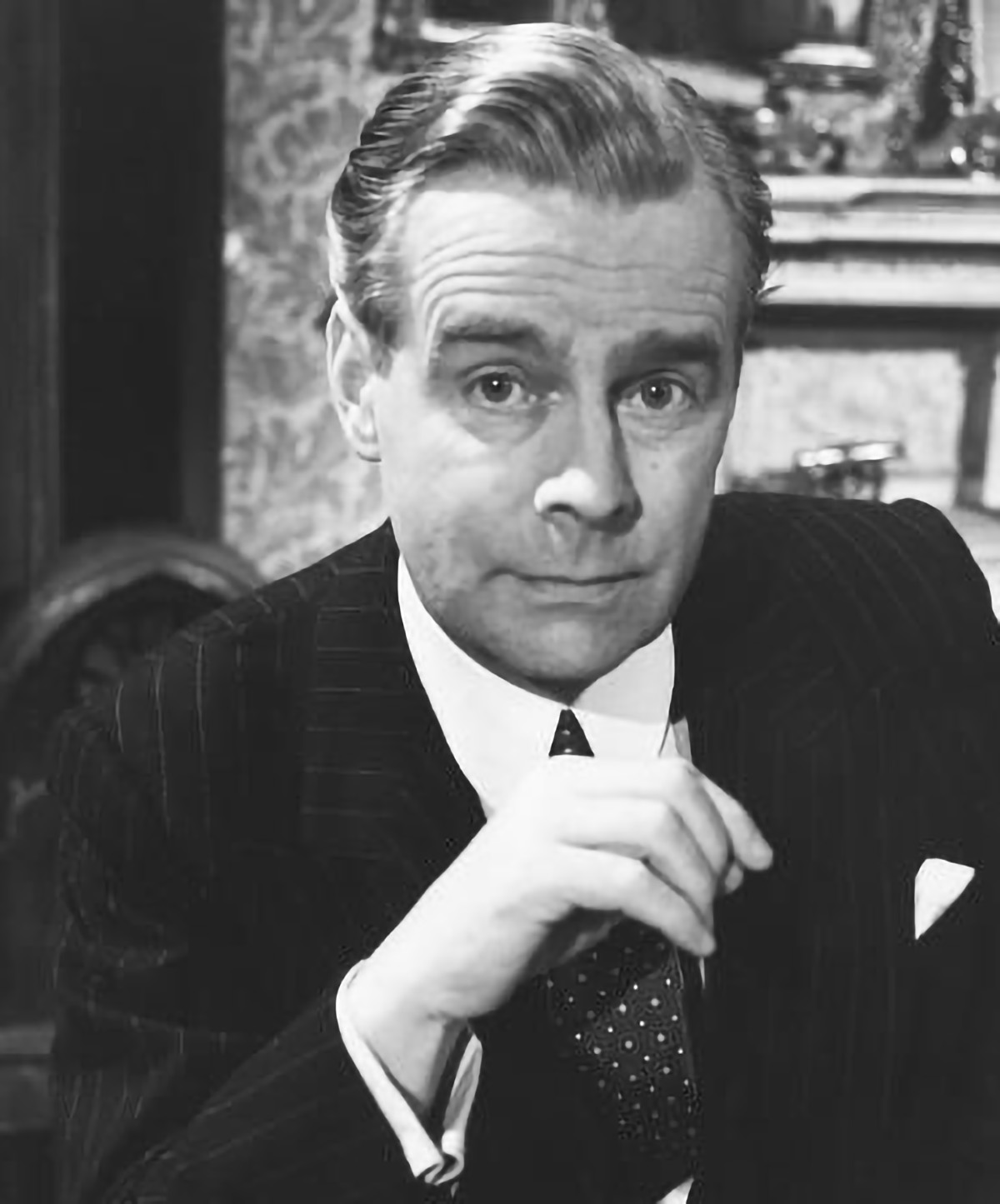
As with the great writers Sayers loved—most notably Dante Alighieri—familiarity with Sayers’ biography is not entirely necessary to appreciate her work. But knowing some of the details of her life illuminates not only the internal lives of her heroine, Harriet Vane, but also the urgency behind nonfiction works like Are Women Human? and The Mind of the Maker.Her own history of emotional turmoil shines through in her ability to render the characters of the Gospels as full-blooded, psychologically robust individuals in the plays that make up The Man Born to Be King. To wit, Sayers would not have become the writer she did without experiencing her particular life of heartbreak—and, even more, without experiencing it precisely the way she did: in silence and secrecy, bearing her deepest sorrows entirely on her own without letting them destroy her spirit.
Sublimation Is Strong Medicine
Sayers’ most overtly biographical writing is Strong Poison, in which the heroine (and future love interest of Lord Peter Wimsey) Harriet Vane is accused of murdering her former lover, one Phillip Boyes. While Sayers herself never stood in the dock, Harriet’s relationship with Boyes is nearly identical to Sayers’ with Cournos: Boyes refuses to consider marriage or children, claiming philosophical convictions against it; he insists that Harriet must consent to live with him without marriage despite her own misgivings; and after the relationship disintegrates, he takes up with another woman and agrees to marry her, proving that the “convictions” that kept him from marrying Harriet were a sham.
While Harriet does become sexually intimate with Boyes and Sayers never consummated her relationship with Cournos, the parallels between the two stories are clear. Sayers had an ongoing fascination with the way human beings make false “bargains” with each other. Throughout her work, she depicts situation after situation of people who make a small moral compromise—like Boyes’ feigning a conviction he does not really have—that has catastrophic consequences for them and the people around them. In Unnatural Death (which has perhaps the most creative murder method I’ve ever encountered), an old woman’s inability to courageously face the reality of her own impending death leads to disaster. In The Five Red Herrings, an artist’s penchant for quarreling drags an entire community into chaos.
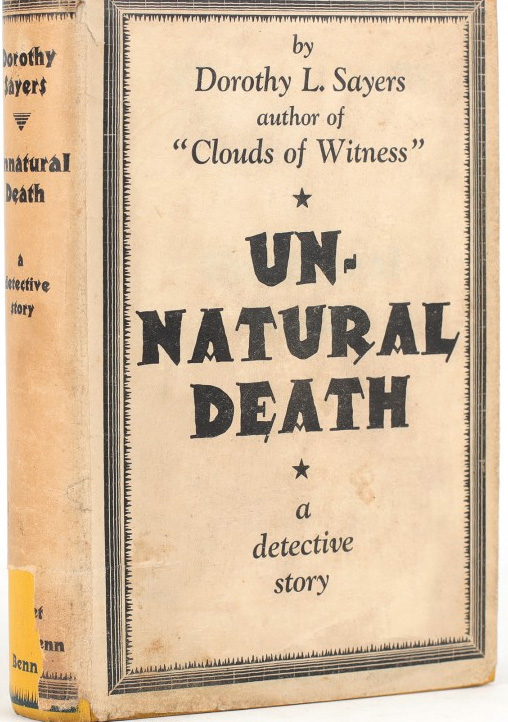
This interest in the wide-ranging effects of minor moral missteps enlivens more than just Sayers’ murder mysteries. In the 12 plays that make up The Man Born to Be King, Sayers explores the Gospel stories with an eye to the human characters in them. Her depictions of the apostles are robust and believable; even her Christ is psychologically well-rounded while obviously being divine.
Strong Poison is the first of four novels chronicling the romance between Harriet and Peter. In the third, Gaudy Night,Sayers delves into another intriguingly biographical plot point: the role of women in top-tier higher education during the first half of the 20th century. In Gaudy Night, Harriet returns to Oxford and her alma mater, the fictional Shrewsbury College, to help her former professors solve an increasingly distressing mystery involving blackmail, lewd notes, and psychological torture. The subsequent months thrust Harriet into a web of deception and spiritual ugliness, and forces her to confront her own deep-seated frustrations with her identity as a woman. Only once she has confronted and overcome these can she welcome the love of Lord Peter.
Harriet’s struggles to understand herself as a woman in the male-centric world of academia lay near Sayers’ own heart, and she returned to the difficulty again and again in her writings. In one slim volume of two essays, provocatively titled Are Women Human?, Sayers tackles the issue of equality between the sexes with Chestertonian aplomb, excoriating both the silliness of progressive feminism and the blindness of Victorian attitudes toward women. In writing about women, Sayers uncovers gems of wisdom about all humanity, as expressed in this quotation: “What is repugnant to every human being is to be reckoned always as a member of a class and not as an individual person.” This is simultaneously the same distinction that so vexes Harriet in Gaudy Night, as she dreads being thought of “as a woman” and not as an individual, as herself; and the distinction that currently threatens the very existence of Western society.
Whenever Sayers’ work draws nearest the hidden depths of her own heart, it blossoms into the most universal truths.
Reducing “womanhood” to a “class” or an “identity,” rather than a natural characteristic of real individuals, has led us today to an almost complete hollowing out of the whole concept. Being part of a “class” always carries with it political implications. “Womanhood” is not a class. It is, as Sayers recognizes, a biological reality that carries with it certain social, emotional, and psychological distinctions; for example, because of the biological reality of being able to bear children, women as a group tend to be more patient with crying children than men are. Because of the biological reality of having lighter bones, women tend to be less qualified (and interested in) manual labor and combat jobs. These are examples Sayers specifically brings up. We can make some general claims about women as a group, but not nearly as many as the Victorians—or feminists—would like. Whereas the Victorians Sayers is writing against tended to view all women as unintellectual, trivial little creatures, much of the feminist movement swung to the opposite extreme, asserting that all women are as good or better than men at all things. Sayers, by emphasizing the reality that women, just like men, are individuals, threads the needle between these two claims. Bringing her keen intellect and perception to bear upon her own soul and wrestling with her personal struggles (at least to a degree) through believable fiction like Gaudy Night, Sayers managed to hit upon a coherent response to some of our era’s most urgent questions.
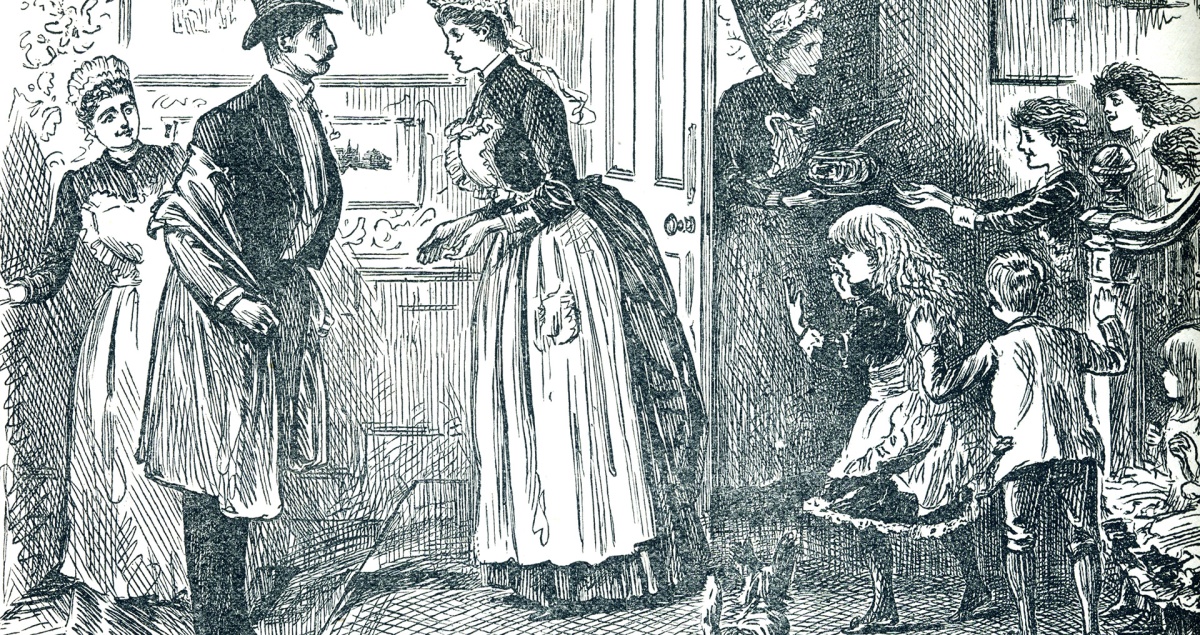
We see this pattern throughout Sayers’ writings: whenever her work draws nearest the hidden depths of her own heart, it manages to blossom into the most universal truths. This is a remarkable characteristic in an artist. Far too often, artists and intellectuals are most precise on topics that lie far away from their own tender points; when they draw near to sensitive subjects, they become sloppy, sentimental, sometimes even silly. In Sayers, we find the opposite: emotional proximity to a subject seems to push her into even closer scrutiny and clearer thinking, giving her work—fiction and nonfiction alike—an inimitable ethos. What she writes of, she clearly knows. Sublimation, for Sayers, is a purifying process. Rather than dragging the universe down to her own experience, she has the moral courage, clarity, and humility to learn from her own experiences and understand the universe better as a result.
A Reasonable Revolutionary
Sayers lived at a peculiar moment in history. During her lifetime, two world wars demolished the existing order in politics and society alike. New political movements, like communism and feminism, emerged with rosy promises of perfect equality and collapsed into oppression (see Stalin’s genocidal Five-Year Plan or rising calls for a “right” to abortion access for “sexually liberated” women). Throughout this tumultuous time, Sayers managed to remain sensible without becoming reactionary; she recognized the importance of some of the changes that were coming but urged caution. As she writes in Are Women Human?, “It is the mark of all movements, however well-intentioned, that their pioneers tend, by much lashing of themselves into excitement, to lose sight of the obvious.” That “obvious,” all too often, was the basic humanity of all humans.
Are Women Human? exhibits a remarkable prescience in light of our current bedlam of identity politics; Sayers recognizes that the feminist movement, despite its good points (which she—and we—will acknowledge later), promotes a basic misunderstanding about women, one that advocates of identity politics will apply to all individuals. Feminists insist that women are, first and foremost, women; their individuality, their personalities, and their interests are all contingent upon their woman-ness. This means that women are, above all, members of a class: the class of women. They can be understood only as members of a group.

This is the first seed of identity politics, or the idea that an individual is not really an individual, but is rather a conglomerate of various “identities.” By “identities,” contemporary politicians and academics usually mean loyalties to various political causes. If a person is a woman, she is expected to be loyal to the “cause of womanhood”—defined, of course, by a progressivism that calls for unlimited abortion and special opportunities for women to compensate for centuries of perceived oppression. If a person is black, or indigenous, or a minority in a primarily white society, he or she is expected to be unflinchingly loyal to the “cause of BIPOC,” which is defined as insisting on the unmitigated evils of colonization, Christianity, Western civilization, stable nuclear families, and other things associated with Europe.
Sayers has this to say about identity politics (defined, in her day, merely as feminism):
In reaction against the age-old slogan, “woman is the weaker vessel,” or the still more offensive, “woman is a divine creature,” we have, I think, allowed ourselves to drift into asserting that “a woman is as good as a man,” without always pausing to think what exactly we mean by that. What, I feel, we ought to mean is something so obvious that it is apt to escape attention altogether, viz: not that every woman is, in virtue of her sex, as strong, clever, artistic, level-headed, industrious and so forth as any man that can be mentioned; but that a woman is just as much an ordinary human being as a man, with the same individual preferences, and with just as much right to the tastes and preferences of an individual. What is repugnant to every human being is to be reckoned always as a member of a class and not as an individual person. (emphasis added)
Women, Sayers believes, are human first and foremost. This means that women, just like men, are capable of a range of sin and saintliness; they have a variety of skills and strengths. There are possible generalizations, she believes: “there is no harm in saying that women, as a class, have smaller bones than men, … have more hair on their heads and less on their faces, … or have more patience with small and noisy babies.” These generalizations can be true without forcing us into assumptions about an individual woman in comparison to an individual man.
Sayers was not blind to the political repercussions of treating people as members of a class rather than as individuals.
“What is unreasonable and irritating,” Sayers says, “is to assume that all one’s tastes and preferences have to be conditioned by the class to which one belongs.” This, she assures us, is the error into which men often fall about women, but it is an error feminists tend to fall into as well. When we begin thinking about people as entirely products of their class, we find ourselves mired in identity politics and tribalism. Sayers warns us that this tribalism (she does not use the word but is clearly aware of the tendency) harms members of the class under discussion as much as members of other classes.
Women who deviate from the general pattern of the group are considered traitors, freaks, or possibly even not fully women. We see this unfolding today, as progressive commentators either denounce pro-life women as anti-woman or assume that women cannot really hold pro-life views and must be getting these views from men. Altogether missing is Sayers’ idea that women are human.
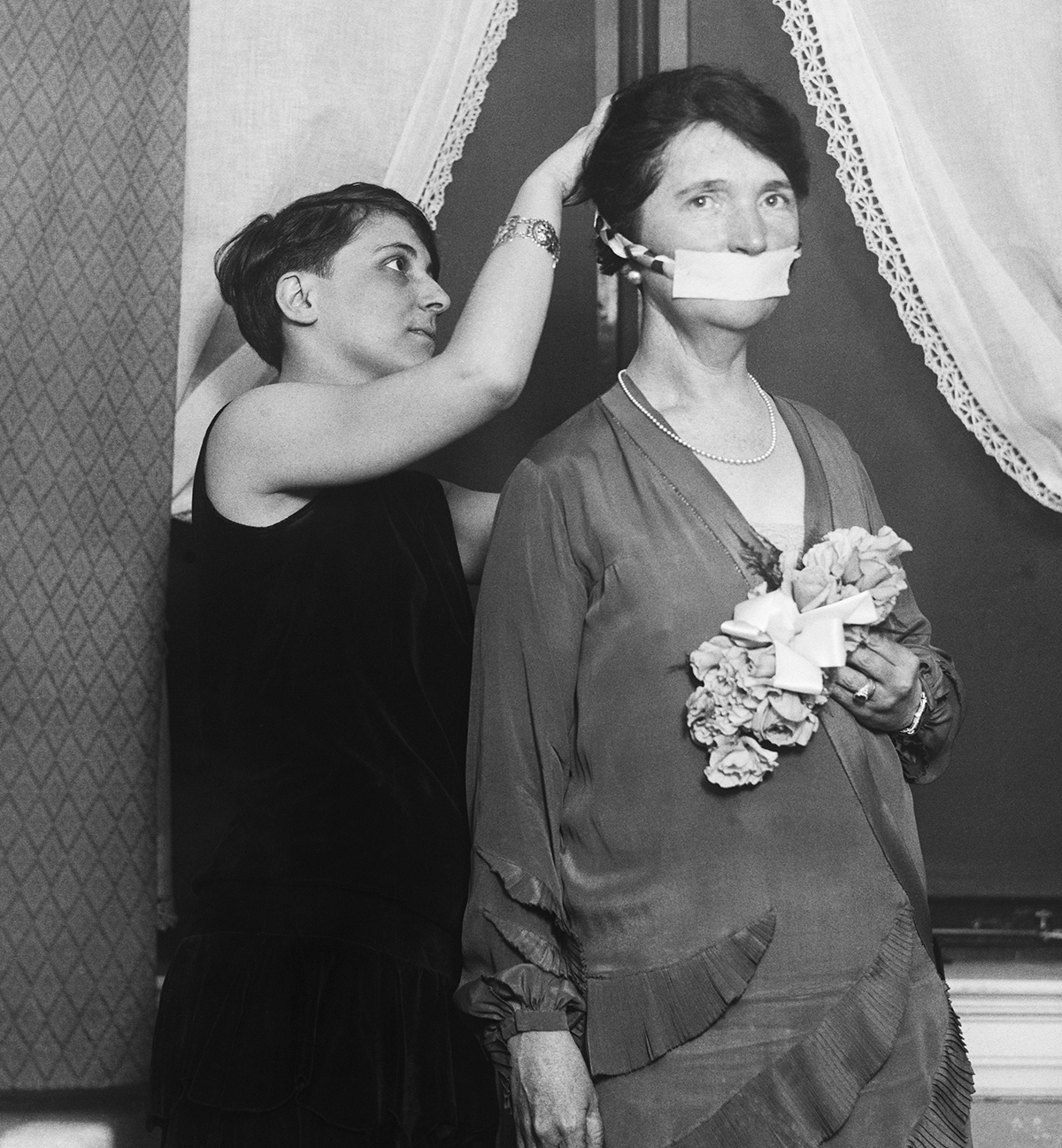
Sayers was not blind to the political repercussions of treating people as members of a class rather than as individuals. “We are much too much inclined these days to divide people into permanent categories, forgetting that a category only exists for its special purpose and must be forgotten as soon as that purpose is served,” she writes. The consequences of this inclination can be severe:
To oppose one class perpetually to another—young against old, manual labor against brain-worker, rich against poor, woman against man—is to split the foundations of the State; and if the cleavage runs too deep, there remains no remedy but force and dictatorship.
This is wisdom, but hard-won. Sayers cultivated this nuanced perspective through the agony of remaining fully human in a world that pressured her to choose a class. Academic or popular writer, wife or writer, conservative or progressive, Sayers refused the limitations of them all. She cared for Mac until the end of his life, even as ill health made him difficult and irritable; but she refused to set aside her art. She wrote Peter Wimsey murder mysteries until she died, while also giving classic texts like The Song of Roland and Dante’s Divine Comedy fresh, readable, yet scholarly and sound translations. She remained steadfast in her orthodox convictions about the nature of Christ, but recognized that women entering the workforce was not, all in all, a bad thing. Stranded between many classes, Sayers rejected easy dichotomies between them. Instead, in a supremely human way, she folded some characteristics of these categories into her own personality and rejected others.
Minding the Maker
In 1941, Sayers published The Mind of the Maker. This book could be described as a theological treatment of what it means to create, or as an aesthetic exploration of the theology of creation ex nihilo; it works both ways.
I’ve never read anything quite like The Mind of the Maker. The central conviction is that “everyone is a ‘maker’ in the simplest meaning of the word”; to make is part of the image of God. “This is so intimate and so universal a function of nature that we scarcely ever think about it,” Sayers writes.
She crafts an intricate metaphor in which an artist’s act of making helps us understand the Trinity, and, reciprocally, meditating on the Trinity can clarify and improve our own acts of creation. All things begin with an Idea, as when an artist says, “I have an idea for a painting” or a poet has an idea for a poem. This is not the substance of the painting or the poem; rather, the Idea “precede[s] any mental or physical work upon the materials or on the course of the story.” This, Sayers says, is an image that allows us to get a slightly better understanding of God the Father—especially since even the Idea of a piece of art is completely inaccessible to us separate from its Energy. Sayers describes Energy as the “Activity or ‘Word’” … that creates the time-process.” The Energy is, in fact, analogous to Christ. Just as the Idea of a piece of art does not precede the Energy, the form and process that will give the art material shape, so the Father does not precede the Son (“the Word was with God in the beginning”).
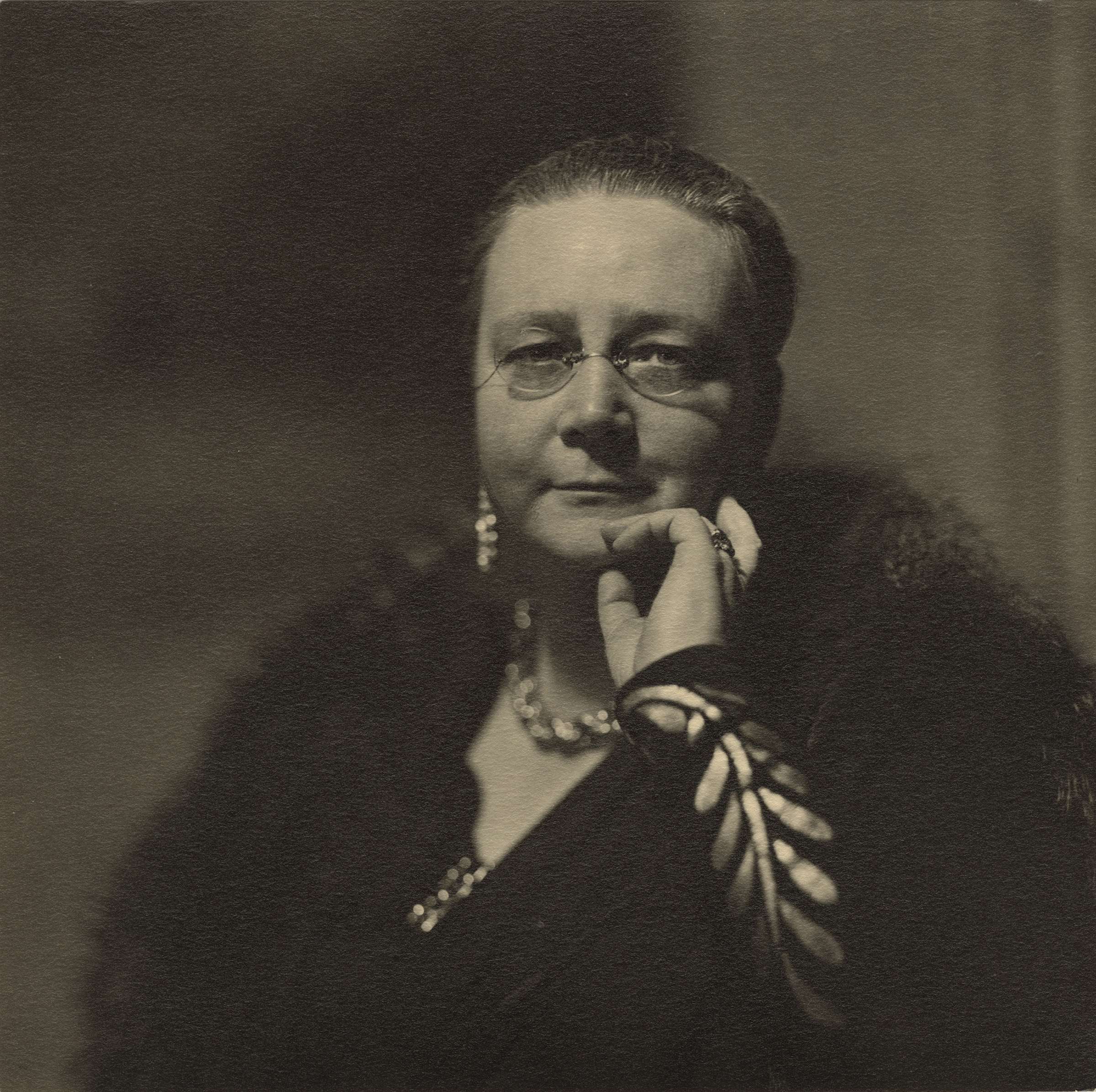
This analogy may seem difficult, but simply think back to the last time you really created something: a drawing, a poem, a meal, a piece of furniture, a garden bed. There was a flash of Idea—an urge, an impulse, a recognition of Something that needed to be expressed. And, exactly in unity with the Idea, there began an activity of expression: the meal would be warm and dripping with gravy! The garden bed would be full of color! The poem would be slightly sad, evocative of times past! The Idea cannot communicate itself to us separate from an Energy, a form.
Then, of course, there is the third part of this curious trinity of making: the Creative Power. This is not merely the actual process of bringing the Idea into material shape; it is also the strength and joy the artist receives back from his making. Every artist knows this feeling of looking at something that he himself has made and deriving genuine pleasure from it—pleasure that is not attached to its being his but to its being at all.
The insights in The Mind of the Maker are transformative both of the way we can understand the Trinity (for, as Sayers and St. Augustine both say, we can understand the Trinity through analogy) and the way we understand making. Thinking about a piece of art as a triunity allows us to identify weaknesses in its wholeness; a film, for example, might strike us as less than perfect, but not until we evaluate its triune structure do we notice that the problem is with an underdeveloped Idea. The Energy, we might find, does not match the Idea, that ineffable thing that buoys up an artwork’s claim to exist. Or perhaps a poem seems to have a sound Idea behind it, but it is didactic, unimaginative, unappealing in its treatment of the Idea. That is a failure of Energy that leads to a dissipation of Creative Power, so the poem fails in its potential unity.
Sayers writes passionately about these tricky topics, pulling examples from her own experiences with writing to illustrate what she means. It becomes clear that she has come to these ideas not out of idle curiosity or abstract speculation but through direct experience carefully observed and analyzed. This ability of Sayers the maker to step back and observe herself making, then to be able to create an analogy to the nature of God himself, is truly a gift.
More than a Mystery
Dorothy Sayers is known mostly as an author of artful mystery stories (something she often doubted the possibility of creating; Gaudy Night is, in one way, entirely about the question of whether genre fiction can be literary). But her contribution to 20th-century letters goes far beyond her popular fiction. She was a brilliant, secretive, bold, assertive, reticent, inquisitive soul who, it seems, never had an experience that she did not analyze, never felt an emotion or struggled with a problem that she did not allow to influence her writing and her thinking.
This wholeness, this entire vital presence of the complete self, is rare. It indicates that Sayers was, in the language of The Mind of the Maker, striving to become a unity in her spiritual life with all the deliberation she applied to her art. In our age that strives to separate people into various groups, and even to break down their personalities into discrete “traumas” or “identities,” such wholeness of spirit, such unity of being, is something to marvel at and to study deeply.




